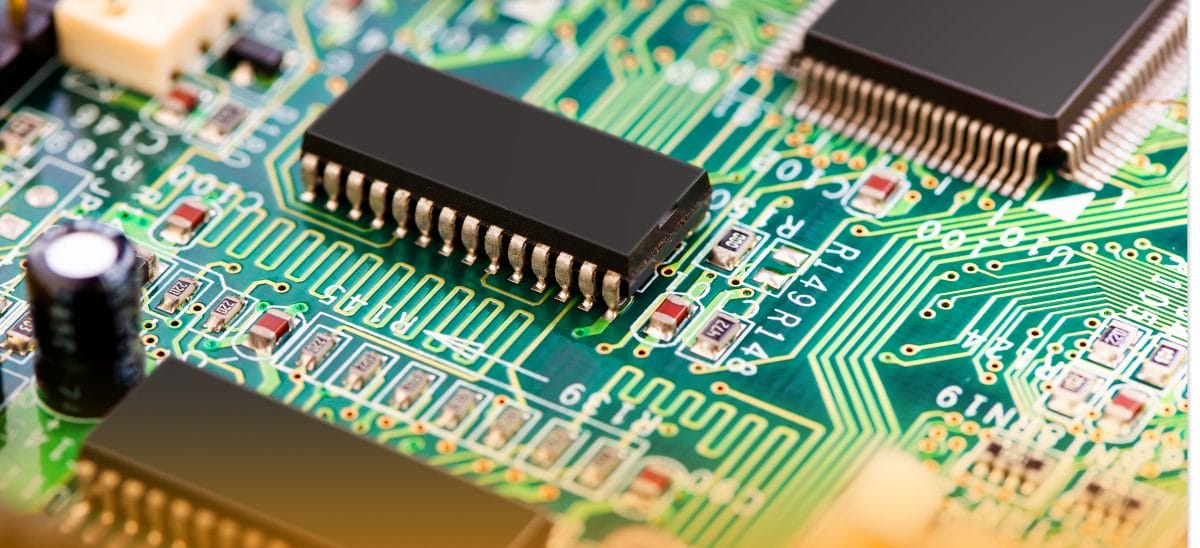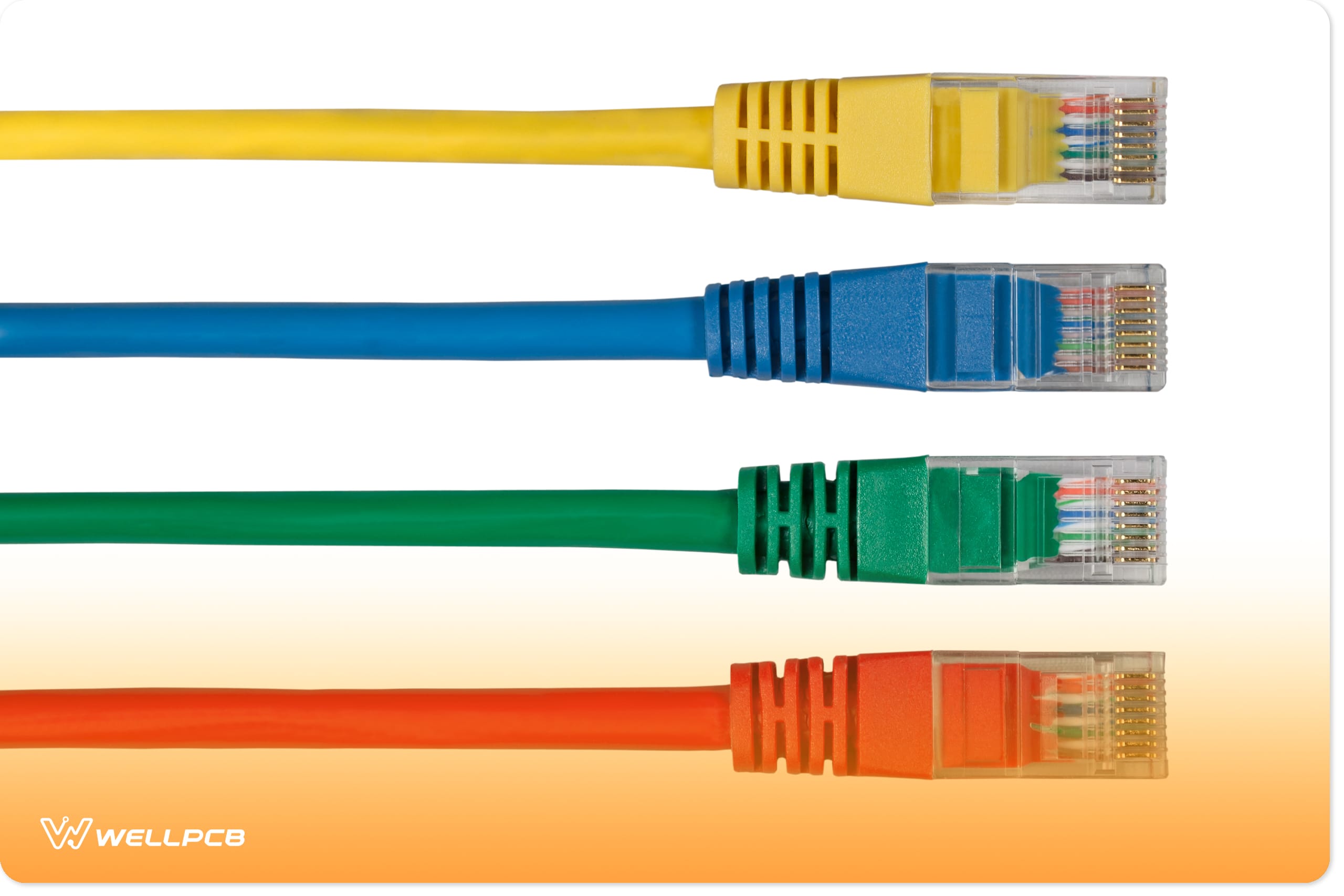Contents
- 1 Electronic Circuit Board Resistors
- 2 Electronic Circuit Board Capacitors
- 3 Electronic Circuit Board LEDs
- 4 Electronic Circuit Board Transistors
- 5 Electronic Circuit Board Inductors
- 6 Electronic Circuit Board Diodes
- 7 Electronic Circuit Board Integrated Circuits
- 8 Electronic Circuit Board Transformers
- 9 Electronic Circuit Board Sensors
- 10 Electronic Circuit Board Potentiometers
- 11 Electronic Circuit Board Crystal Oscillators
- 12 Electronic Circuit Board Switches and Relays
- 13 Silicon-Controlled Rectifier (SCR)
- 14 Passive Devices
- 15 Wires
- 16 Conclusion
Electronic Circuit Board Resistors
Resistors are essential components used in PCBs and somewhat the simplest ones to understand. The function of resistors is to reduce the flow of current through a PCB by actively dissipating or dispersing electric power in the form of heat. Resistors come in several different types made using a wide array of materials. However, a typical resistor should contain leads on both ends for a beginner or a hobbyist, not forgetting that the body needs inscribing with some colored rings. Of importance to note is that the rings are codes that indicate the value of their resistance.

Electronic Circuit Board Capacitors
Besides resistors, capacitors come in as another typical component you’ll find on a printed circuit board. Most of the time, resistors outnumber them. Their function is to temporarily hold electronic charges and release them the moment any part of the circuit needs power.
Capacitors achieve this function by effectively collecting the opposite charges on two conductive layers separated by a dielectric or insulating material. Capacitors are mainly characterized based on dielectric or conductor material. Some of them have the same look as axial resistors, though classic capacitors are radial in style, consisting of two leads that protrude from the same end.

Electronic Circuit Board LEDs
When it comes to matters concerning electronics, especially if you are a beginner, you’ll come across LEDs, also known as light-emitting diodes. The LED symbol is a standard symbol of the diode and two arrows that detonate emissions of light. Hence the name LED, or light-emitting diode. LEDs find use in art lighting, outdoor lighting, and night lighting, among others.
LEDs work as semiconductors, and as electrons get to pass through them, they turn into light. As electrons and holes zip back and forth and wipe each other out, they make a complete atom, giving a light burst of energy.
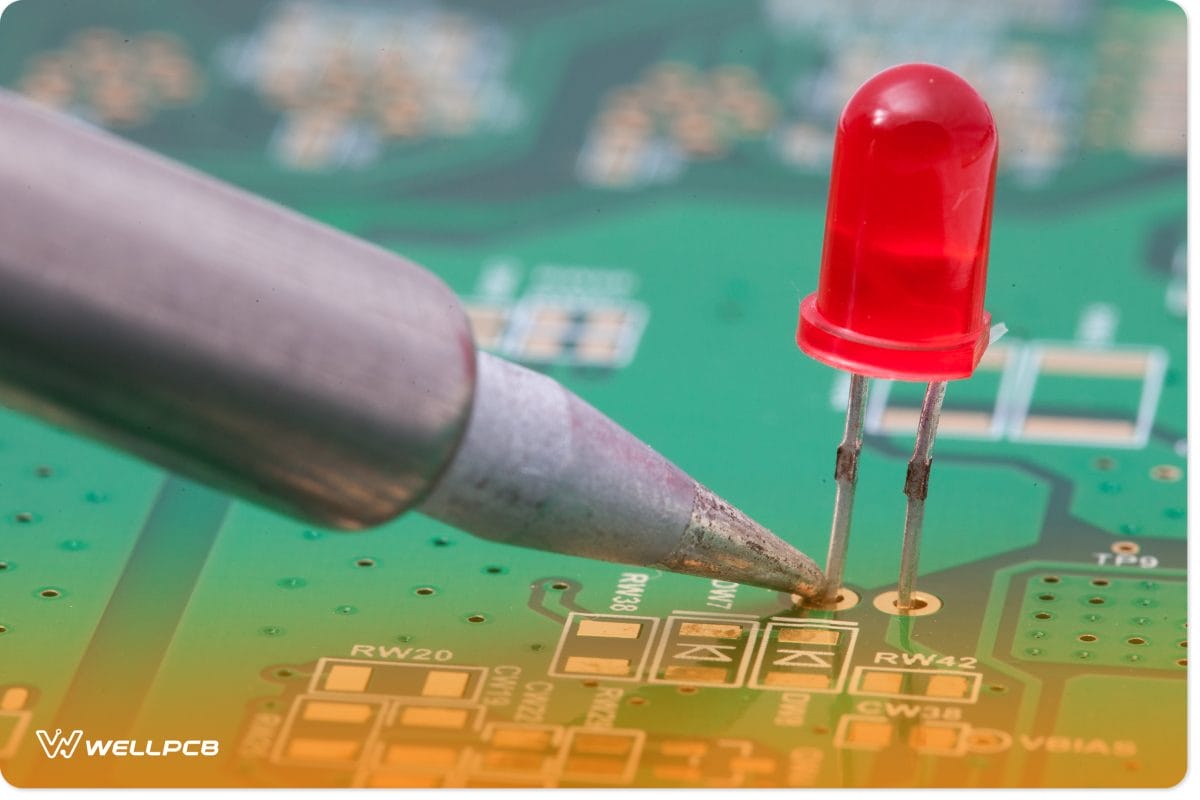
Electronic Circuit Board Transistors
Transistors are regarded as the essential building blocks for modern electronics, and you can find billions of them in one piece of IC chip. They are electronic switches and amplifiers that come in different types.
Bipolar is the most common, although there are PNP and NPN versions. Bipolar ones have three pins (the collector, base, and the emitter). There is also another type of transistor known as FETs or Field Effect Transistors that employs an electric field to activate the other circuit.
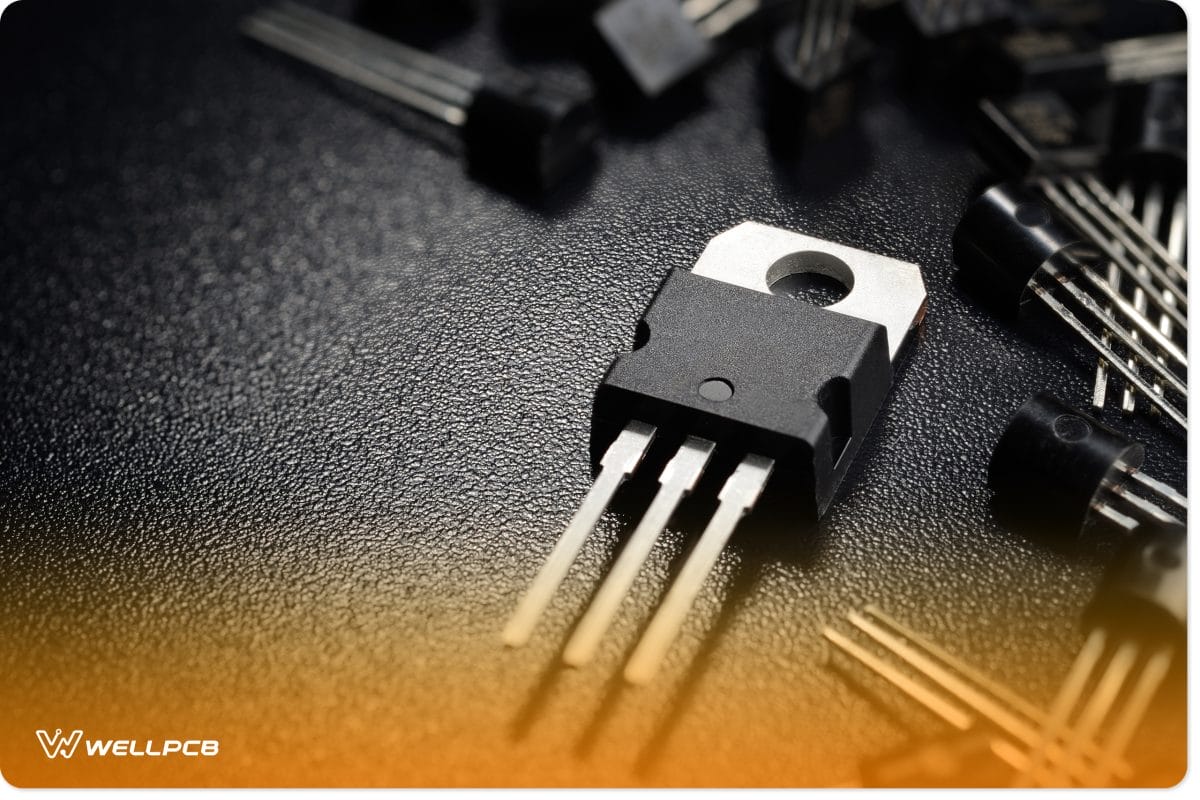
Electronic Circuit Board Inductors
When it comes to linear passive parts, inductors are the last, along with capacitors and resistors. Like capacitors, inductors store energy, but in the form of magnetic fields that generate the moment current gets to flow through them. A simple example of an inductor coil is a wire, and the more the number of windings within an inductor, the higher the inductance due to a large magnetic field.
The primary use of inductors is to block out or filter specific signals. For example, they may be used to block interference in TV equipment or even use capacitors to manipulate AC signals, especially in power supplies that are on switch mode.

Electronic Circuit Board Diodes
As a one-way street, diodes are electrical devices that allow the current to flow in one direction only. This flow of current is from the anode to the cathode. Diodes achieve this function by ensuring high resistance in one direction and zero resistance in the other direction.
An excellent feature is effectively used to prevent the current from heading towards the wrong path, an aspect that can cause damage. LED is the most common diode that’s popular with beginners and used to emit light. But again, it is essential to understand matters to do with their orientation first to avoid them from not lighting up.

Electronic Circuit Board Integrated Circuits
Integrated circuits are components and circuits that get shrunk down onto the wafers of the semiconductor material. Many parts that can effectively fit onto just single Integrated circuits are chips that brought about the powerful computers, first calculators, and supercomputers. Integrated circuits are the super brains of the whole PCB.
You find integrated circuits mainly enclosed in black housing made of plastic material in different shapes and sizes. Integrated circuits have visible contacts, such as leads and contact pads that extend out from the body.
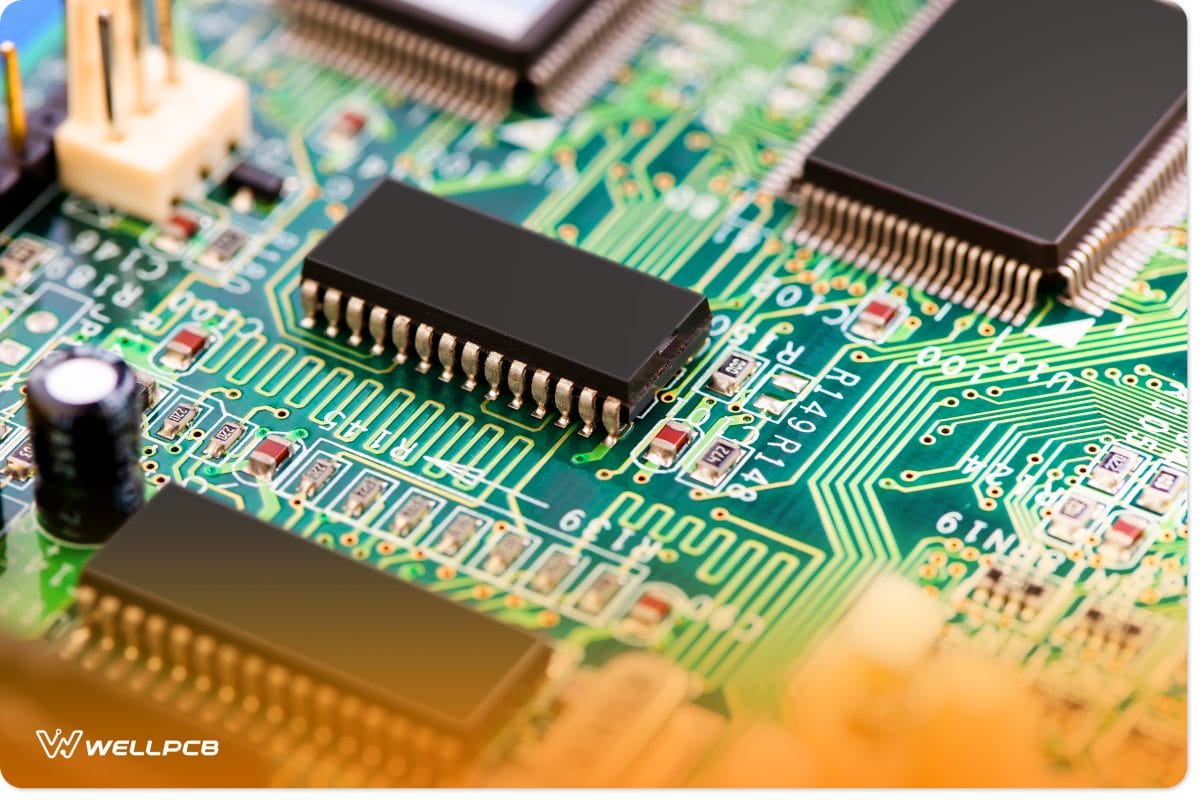
Electronic Circuit Board Transformers
A transformer’s function is to ensure that the transfer of electrical energy from one circuit to the next is effective. It should happen regardless of whether the voltage increases or decreases. In short, it transforms voltage. Like inductors, transformers have a very soft iron core consisting of at least two wire coils wound around it.
Energy transfer to the primary and secondary coils. There are chances that you might have seen substantial industrial transformers placed on telegraph poles. They reduce the voltage from the overhead lines of transmission to the very few ideals for household usage.
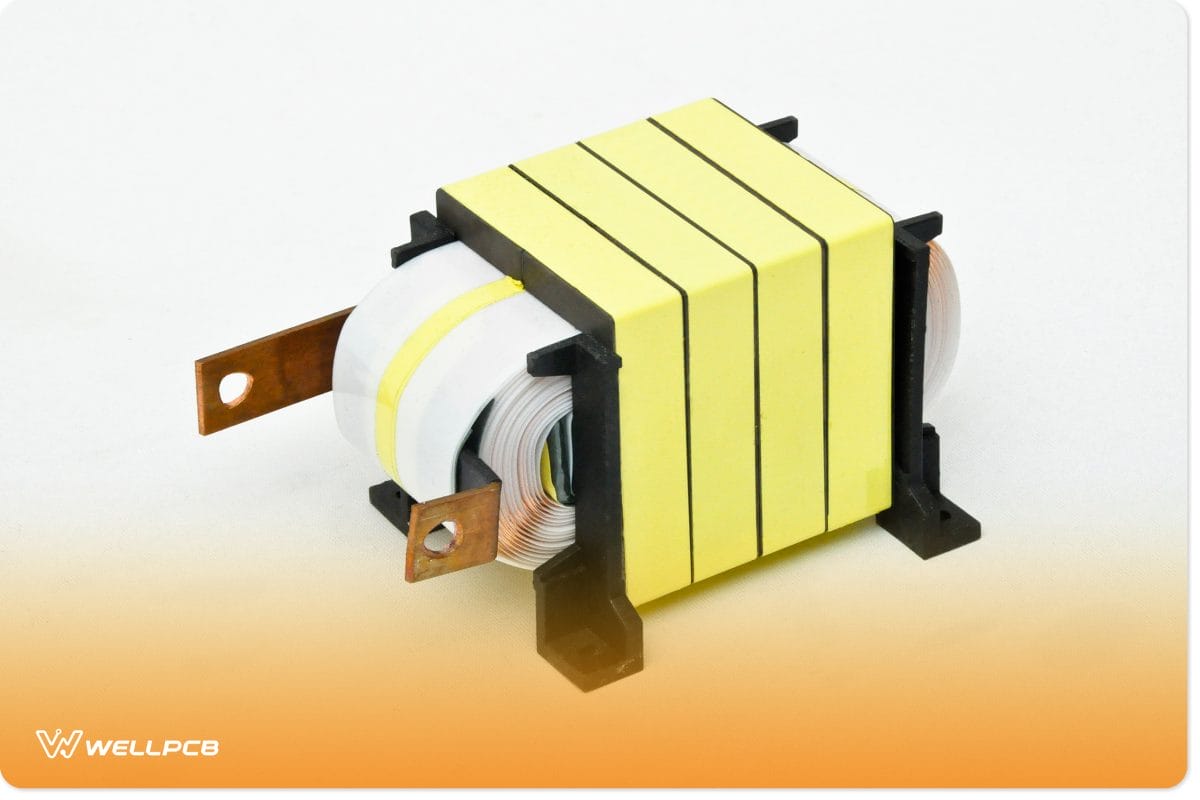
Electronic Circuit Board Sensors
These are electrical circuit components whose role is to sense any changes in the environment and immediately respond to such changes by generating electrical signals that correspond to such changes. Sensors do work by converting power from physical phenomena onto electrical energy, meaning that they are, in short, transducers –they convert energy from one form to the other-. A majority of sensors are available for several environmental stimuli, such as light, humidity, air quality, motion sensors, and sound.
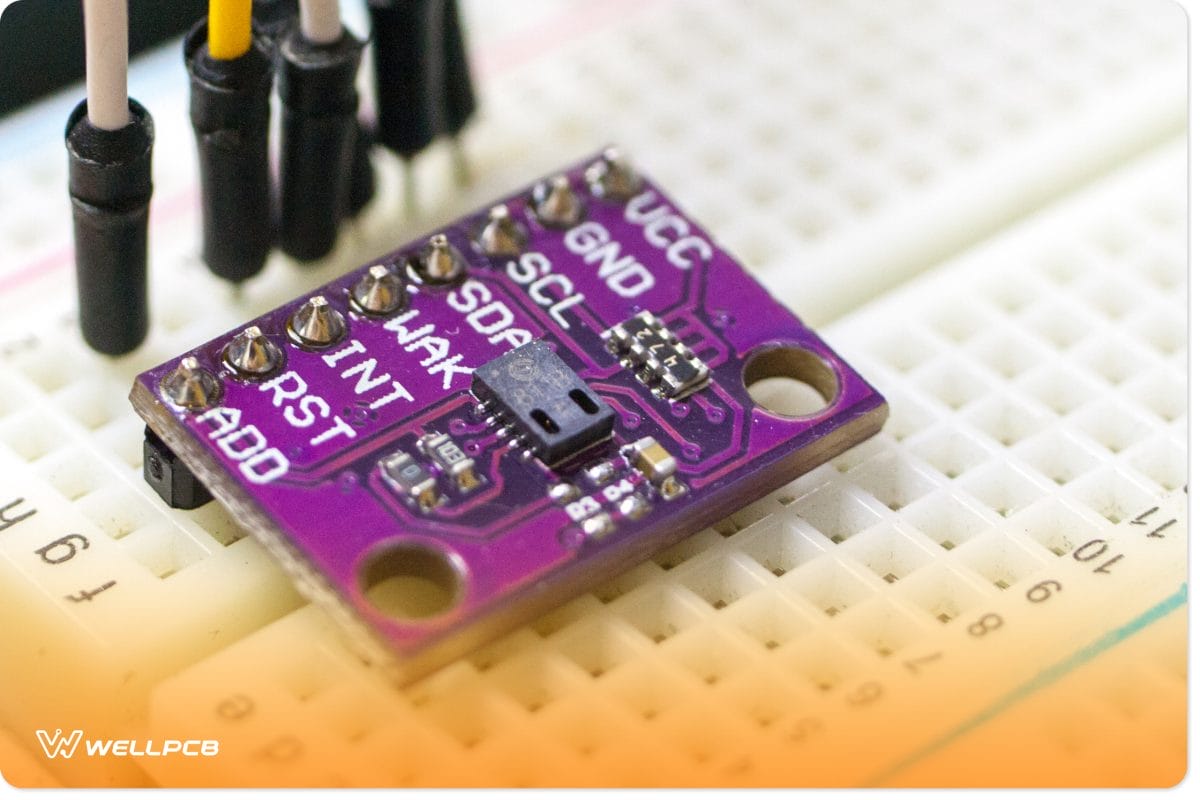
Electronic Circuit Board Potentiometers
Potentiometers are some forms of variable resistors. Potentiometers are mainly available in linear and rotary types. If you rotate a rotary potentiometer knob, resistance will be varied because the slider contact gets moved on a semi-circular resistor.
An apt example of a rotary potentiometer is a volume controller found on radios. The potentiometer also works in the same way, except that matters concerning resistance vary, bypassing the slider contact linearly on the resistor.

Electronic Circuit Board Crystal Oscillators
Crystal oscillators in electronic circuit boards provide the clock in a majority of electric circuits that need stable timing and precise elements. Crystal oscillators produce periodic electronic signals by the process causing piezoelectric material physically.
Every crystal oscillator is made to vibrate at specific frequencies, and very stable and economical, and comes with small form factors compared to other timing methods. Based on this reason, crystal oscillators are mainly used for precise timers and, commonly, in almost all quartz wristwatches.

Electronic Circuit Board Switches and Relays
Switches and relays are some of the most overlooked components in electronic circuits. A switch is a power button that controls the flow of current in a course. It achieves this by the process of switching in between a closed and an open curriculum.
Switches vary in physical appearance and look, ranging from the rotary, lever, push-button, and key switches, among others. On the other hand, a relay is a switch whose operation is via a solenoid. Relays function as switches and work by amplifying small currents to become large ones.

Silicon-Controlled Rectifier (SCR)
Also referred to as thyristors, Silicon-Controlled Rectifiers resemble diodes and transistors. SCRs are necessarily two transistors that work together. They have three leads consisting of four silicon layers instead of three and function as switches and not amplifiers. Another notable difference is that only one pulse is needed when one wants to activate the switch. Silicon Controlled Rectifiers are suitable for applications that require large amounts of energy.

Passive Devices
When talking about electronic circuit boards, you may hear of the term passive components. Passive components are also some of the most commonly used parts in the manufacture of an electronic circuit board. Passive components are those parts within an electronic circuit that don’t generate energy, though they can dissipate or store it without the need for electric power to function.
They fall into two categories – lossless and dissipative. Dissipative components can’t absorb the power of an external circuit, while lossless components don’t have an output or input power flow. Examples of passive components include inductors and diodes.
Wires
Wires are mainly used in different electronic equipment types to transmit electricity from one source to the next. While some of them comprise aluminum and other materials, nearly all of them are from copper. However, the type of wire needed depends on the application where it will be useful. Several kinds of wires exist, such as ribbon cables, screened cables, connecting wires, and RF coaxial feeders. Each of them is for individual specified use.
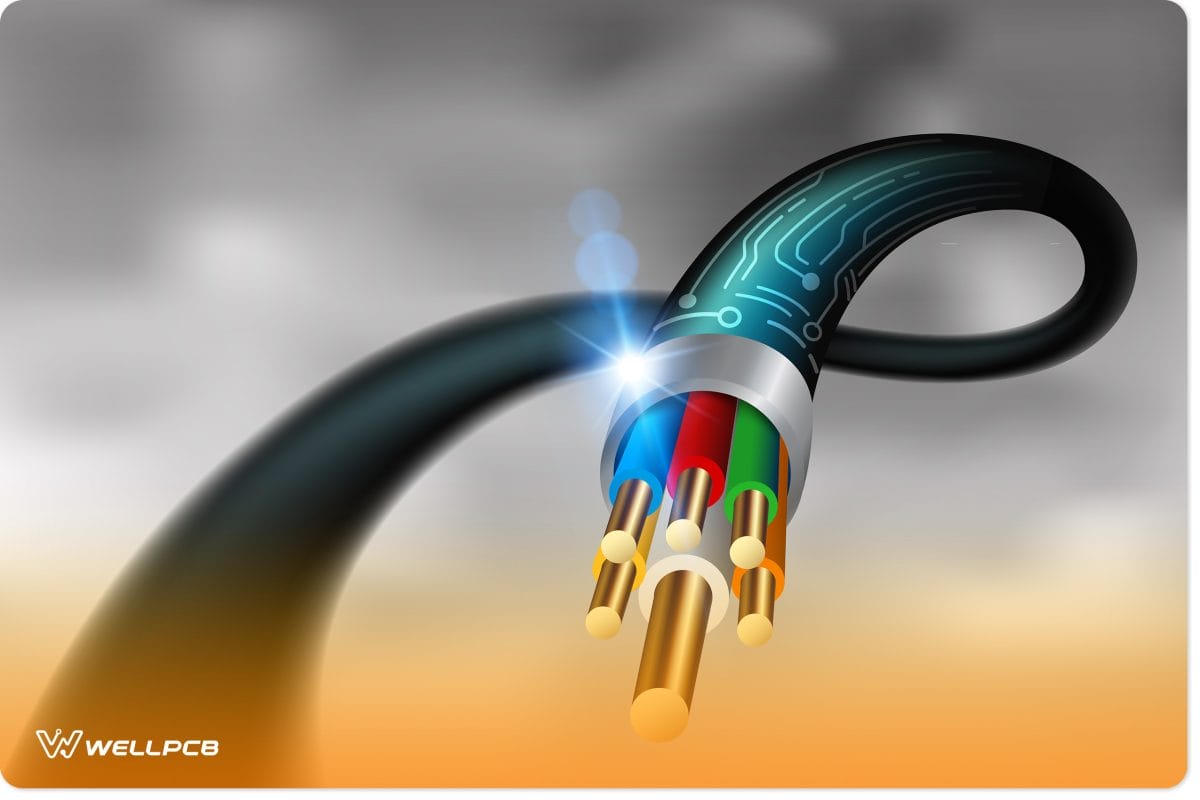
Conclusion
By now, you must be aware of the commonly used electronic components found on electronic circuit boards. If you so wish, you can try undertaking an electronic project on your own. In case you already have an idea about these components and are already designing a PCB, then look no further than WellPCB.
At WellPCB, we do our best to significantly lower the production barriers, both for novice and experienced makers. We can offer you a trial service with no assembly costs. The only thing for you to do is purchase the components you need to save more than 70% on the actual price. There’s no time like now for you to try our great turnkey PCB assembly.
